When it comes to camping, immersing oneself in the wonders of nature is truly a magical experience. From the crackling campfire to the starry night sky, every moment spent in the wilderness offers a sense of tranquility and adventure. However, as responsible campers, we must enjoy our surroundings and respect and protect the natural habitats of the wildlife that call these areas home.
Choosing the perfect campsite goes beyond finding a flat spot or a picturesque view. It requires understanding animal habitats and committing to ethical camping practices. By considering the diverse needs of wildlife, we can minimize our impact and create a harmonious environment for all creatures, great and small.
This blog post will explore tips and guidelines to help you select a campsite that respects animal habitats while ensuring a memorable camping experience. From understanding the local wildlife to identifying signs of animal activity, join us on this journey to become mindful stewards of the great outdoors.
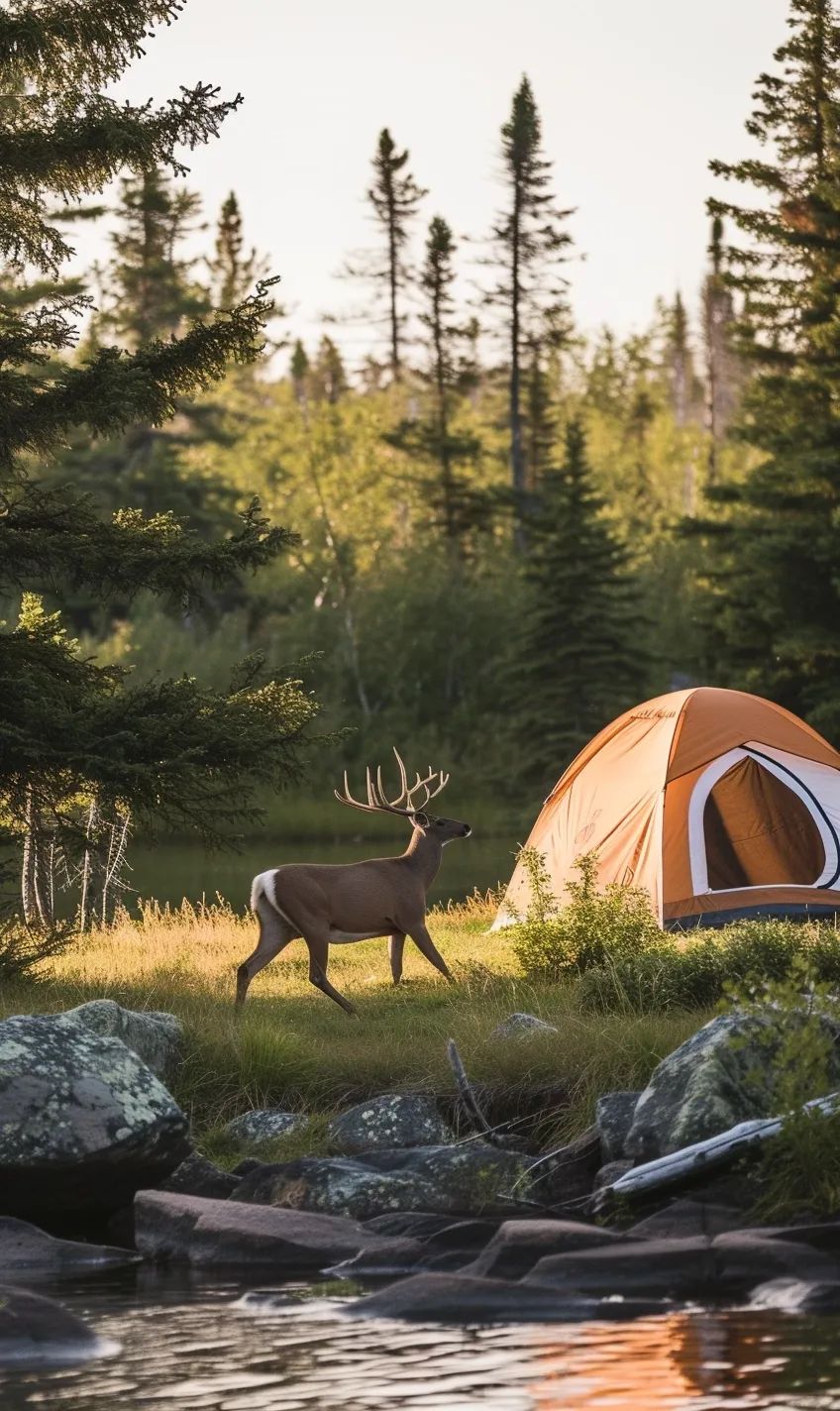
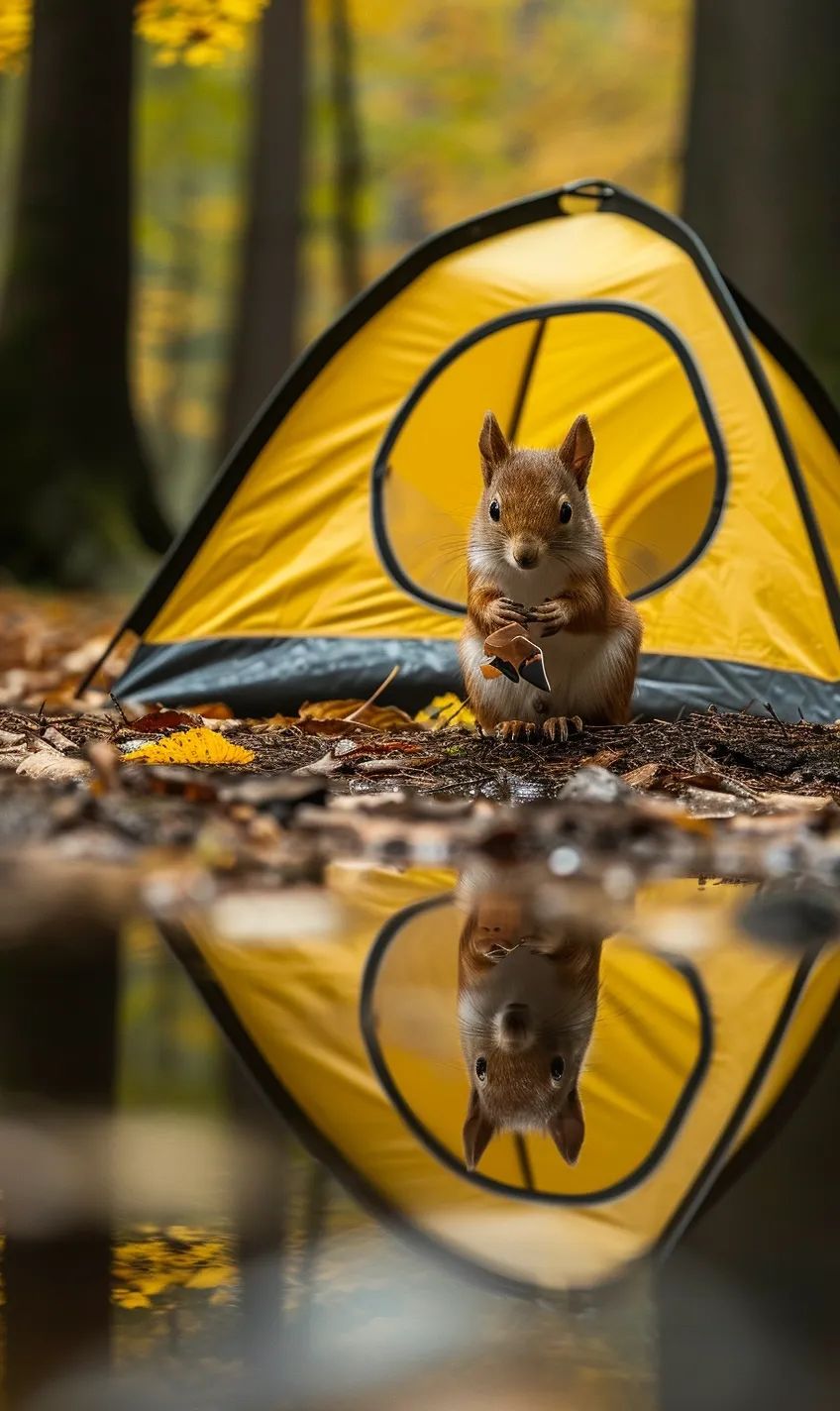
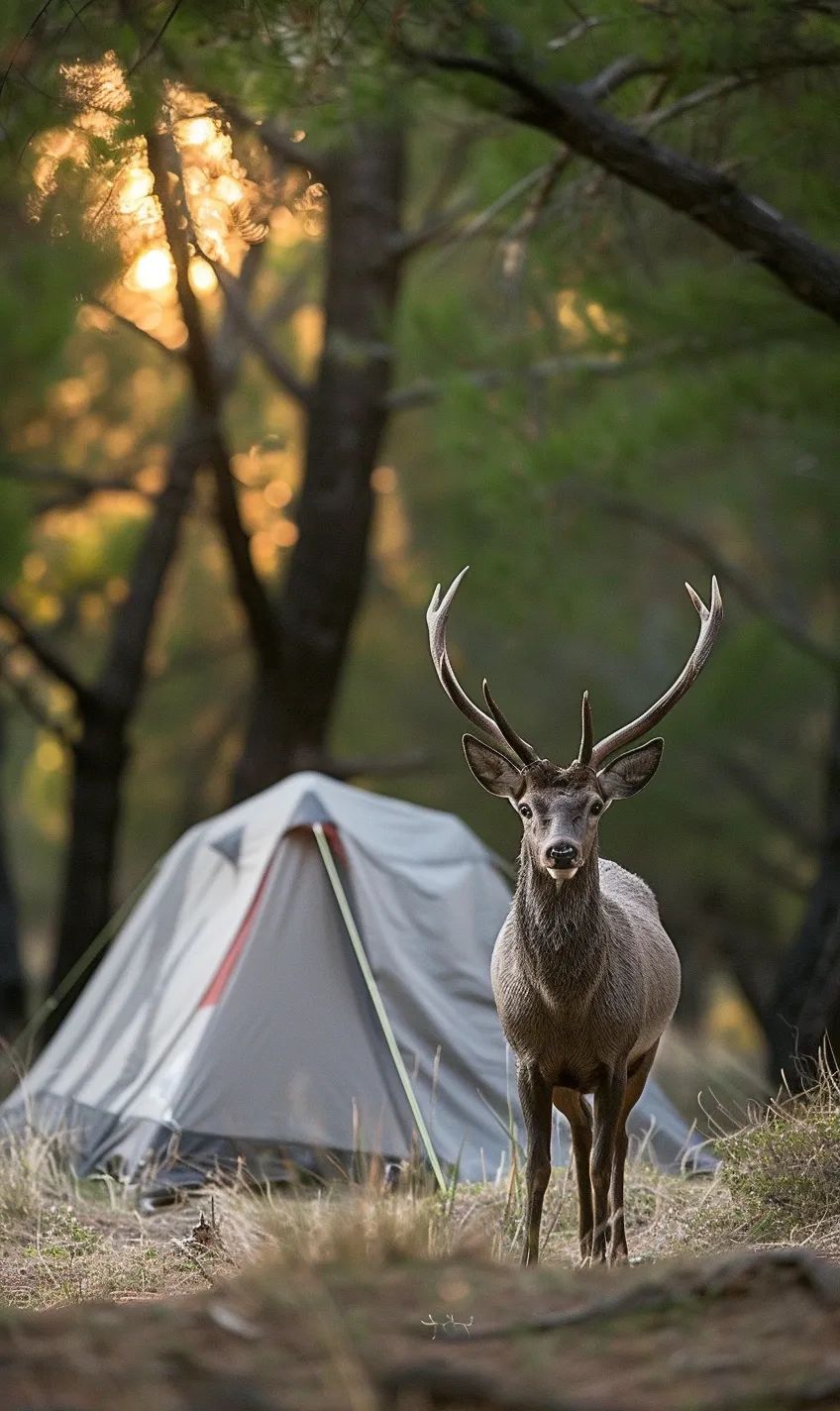
Consider Wildlife When Selecting Your Campsite
When it comes to camping, choosing a suitable campsite goes beyond finding a comfortable spot. It’s crucial to consider the wildlife that inhabits the area as well. By being mindful of the animals and their habitats, we can ensure a more harmonious camping experience that minimizes our environmental impact. Here are some tips to help you select a campsite that is compatible with animal habitats:
Understanding Animal Habitats – A Guide for Campers
Before heading out on your camping trip, take some time to research the local wildlife and their habitats in the area you plan to visit. Learn about the species that live there, their behaviors, and the unique ecosystems they rely on. This knowledge will enable you to make informed decisions when selecting a campsite. Consider the following:
- The presence of water: Many animals rely on water sources for survival. Choosing a campsite near a river, lake, or other water bodies can attract diverse wildlife.
- Density of vegetation: Animals seek shelter and food sources within their natural habitats. Campsites surrounded by dense forests or vegetation are more likely to provide refuge for various species.
- Food availability: Different animals have specific dietary needs. Look for campsites that offer a variety of food sources to support the local wildlife population.
- Migratory patterns: Some species migrate seasonally, and camping near their migration routes or stopping points can provide unique opportunities to observe these remarkable animals.
Tips for Finding a Campsite Compatible with Animal Habitats
Here are some practical strategies when looking for a wildlife-friendly campsite:
- Choose established campsites: Opt for designated campgrounds rather than venturing into undesignated areas. These established sites are often designed to minimize the impact on wildlife.
- Avoid disturbing sensitive areas: Look for signs indicating sensitive habitats or protected zones and choose a campsite away from these areas.
- Keep a respectful distance: While getting up close to observe wildlife can be tempting, maintain a safe distance to avoid causing stress or disrupting their natural behaviors.
- Store food properly: Keep your food secured in wildlife-resistant containers or hang it from trees, out of reach from curious animals.
- Minimize noise and light pollution: Loud noises and excessive artificial lighting can disturb wildlife. Be mindful of your sounds, and use minimal lighting during nighttime.
By incorporating these considerations into your campsite selection process, you can create a camping experience that respects and coexists harmoniously with wildlife. Showcasing responsible camping practices benefits the animals and enhances our connection with nature. So why not choose your next campsite with wildlife in mind? You’ll contribute to preserving animal habitats and gain a deeper appreciation for the remarkable creatures that share our planet.
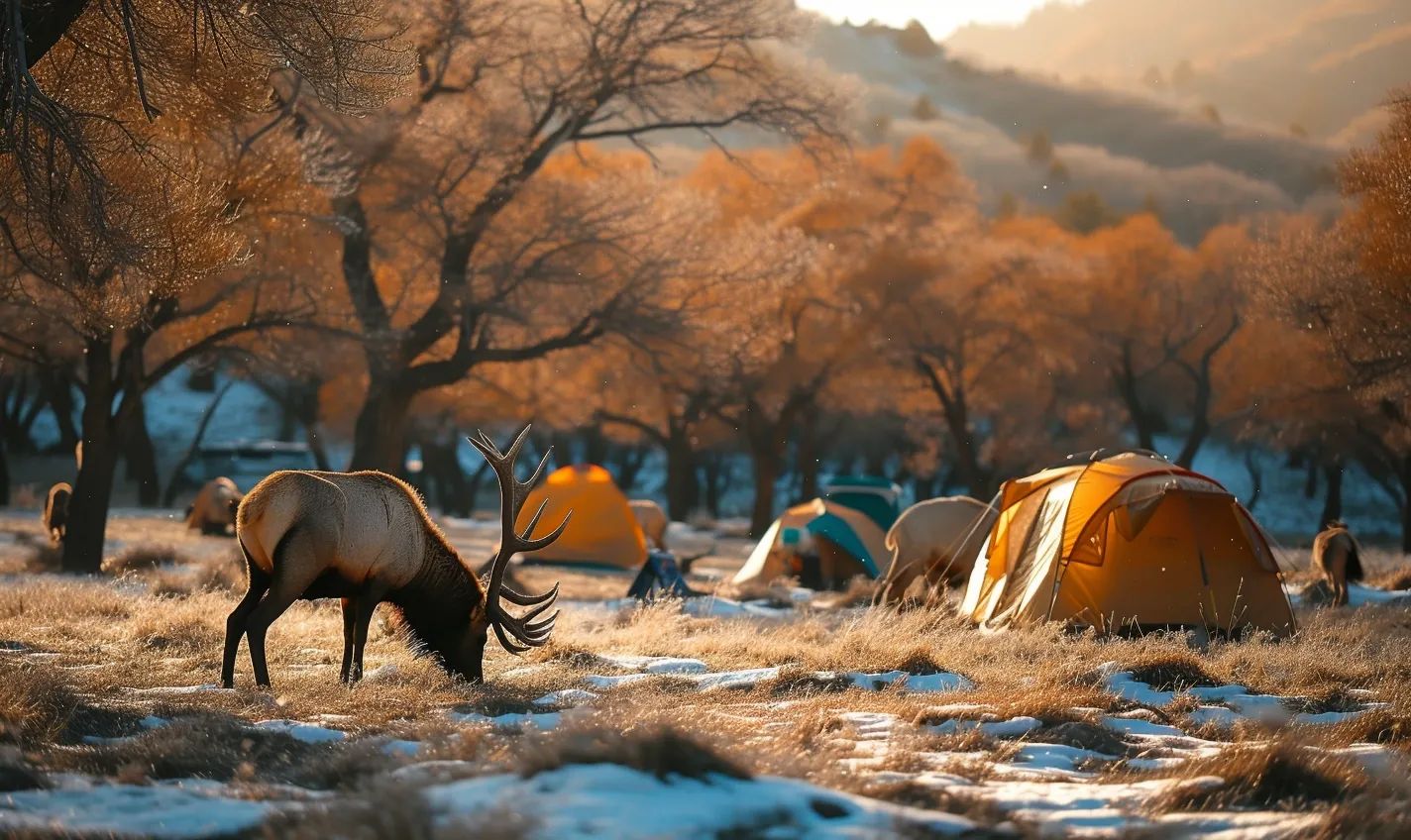
Understanding Animal Habitats: A Guide for Campers
Creating a harmonious coexistence with wildlife
When embarking on a camping trip, choosing a campsite that respects and preserves the natural habitats of the wildlife in the area is essential. By understanding animal habitats and making informed decisions, campers can ensure a harmonious coexistence with wildlife and have an unforgettable outdoor experience. So, how can you choose a campsite that aligns with animal habitats? Let’s explore some key considerations:
Research the local wildlife.
Every region is unique when it comes to its wildlife. Before selecting a campsite, research the local animal species in the area. Please find out about their behavior, preferred habitats, and activity patterns. By understanding the needs and habits of wildlife, you can choose a campsite that minimizes disruptions to their natural habitats.
Stay away from sensitive habitats.
Some areas may be designated as sensitive habitats, such as nesting sites or migration routes for certain species. These areas require special care and attention to ensure the well-being of the wildlife. Avoid camping in these areas, as it could disturb critical animal breeding or resting grounds. Respect any signage or guidelines provided by local authorities regarding sensitive habitats.
Leave no trace
One of the most essential principles of camping is leaving no trace. This means cleaning up after yourself, disposing of waste properly, and avoiding any activities that may harm the environment or wildlife. Remember, even small actions can have a significant impact on animal habitats. Stick to established trails, refrain from feeding wild animals, and keep a safe distance to prevent conflicts or disruptions.
Be mindful of noise and lights.
Wildlife often relies on their senses to navigate their surroundings. Excessive noise and bright lights can disturb animals’ natural behaviors, affecting their feeding and sleeping patterns. Keep noise levels to a minimum, especially at night, and use low-impact lighting options that won’t disrupt the natural environment. By reducing disturbances, you enable wildlife to thrive undisturbed in their habitats.
Avoid attracting wildlife
While catching glimpses of wildlife during your camping trip can be exciting, avoiding activities that may attract animals unnaturally is essential. Proper food storage, securing garbage, and using bear-resistant containers are crucial to prevent wildlife from becoming dependent on human food sources.
Maintaining the natural feeding patterns of animals ensures their long-term survival and well-being. Campers can foster a sense of coexistence with wildlife by understanding animal habitats and making conscious choices. Remember, the goal is to preserve and protect the natural beauty of our surroundings, allowing both humans and animals to enjoy the wonders of the great outdoors.

The Importance of Respecting Wildlife in the Camping Environment
Regarding camping, it’s not just about enjoying the great outdoors and experiencing nature firsthand. It’s also about being mindful of the wildlife inhabiting our camp areas. By choosing a campsite that respects animal habitats, we can positively impact the natural environment and ensure the safety and well-being of the wildlife that calls it home. Here are a few reasons why it is essential to respect wildlife in the camping environment:
Preservation of Animal Habitats
By selecting a campsite that is compatible with animal habitats, we help preserve these crucial ecosystems. Setting up camp in an area known to be a natural corridor for wildlife, or where animals gather for food and water, can disrupt their natural behavior patterns and potentially cause harm. Researching and choosing a campsite that minimizes our impact on the local wildlife is essential.
Ensuring the Safety of Wildlife
When we camp in an area home to various wildlife species, we must remember that we are the visitors to their territory. By respecting their natural behavior, keeping a safe distance, and not encroaching on their habitats, we can help prevent unintended consequences. By choosing a campsite away from animal nesting grounds, mating areas, or feeding locations, we can ensure the safety and well-being of ourselves and the animals.
Minimizing Human-Wildlife Conflict
Respecting wildlife in the camping environment is crucial to minimize human-wildlife conflict. By selecting a campsite away from commonly used animal paths or areas known for wildlife encounters, we reduce the likelihood of unwanted encounters, potentially dangerous situations, or incidents that can disrupt the natural behaviors of the wildlife around us.
Promoting the Long-Term Survival of Species
Choosing a campsite that respects animal habitats serves the immediate interests of wildlife and contributes to species’ long-term survival. By minimizing our impact on the natural environment and understanding the needs of the wildlife around us, we can play a part in preserving the delicate balance of ecosystems and ensuring the continued existence of the animals that depend on them.
Respecting wildlife in the camping environment is not just an ethical responsibility—it’s an opportunity to connect with nature and be part of the conservation effort. By being mindful of our actions and choosing a campsite that considers animal habitats, we can create a positive camping experience while minimizing our impact on the wildlife we encounter. So next time you plan a camping trip, remember to choose a campsite that respects and preserves the natural habitats of the animals that share our world. 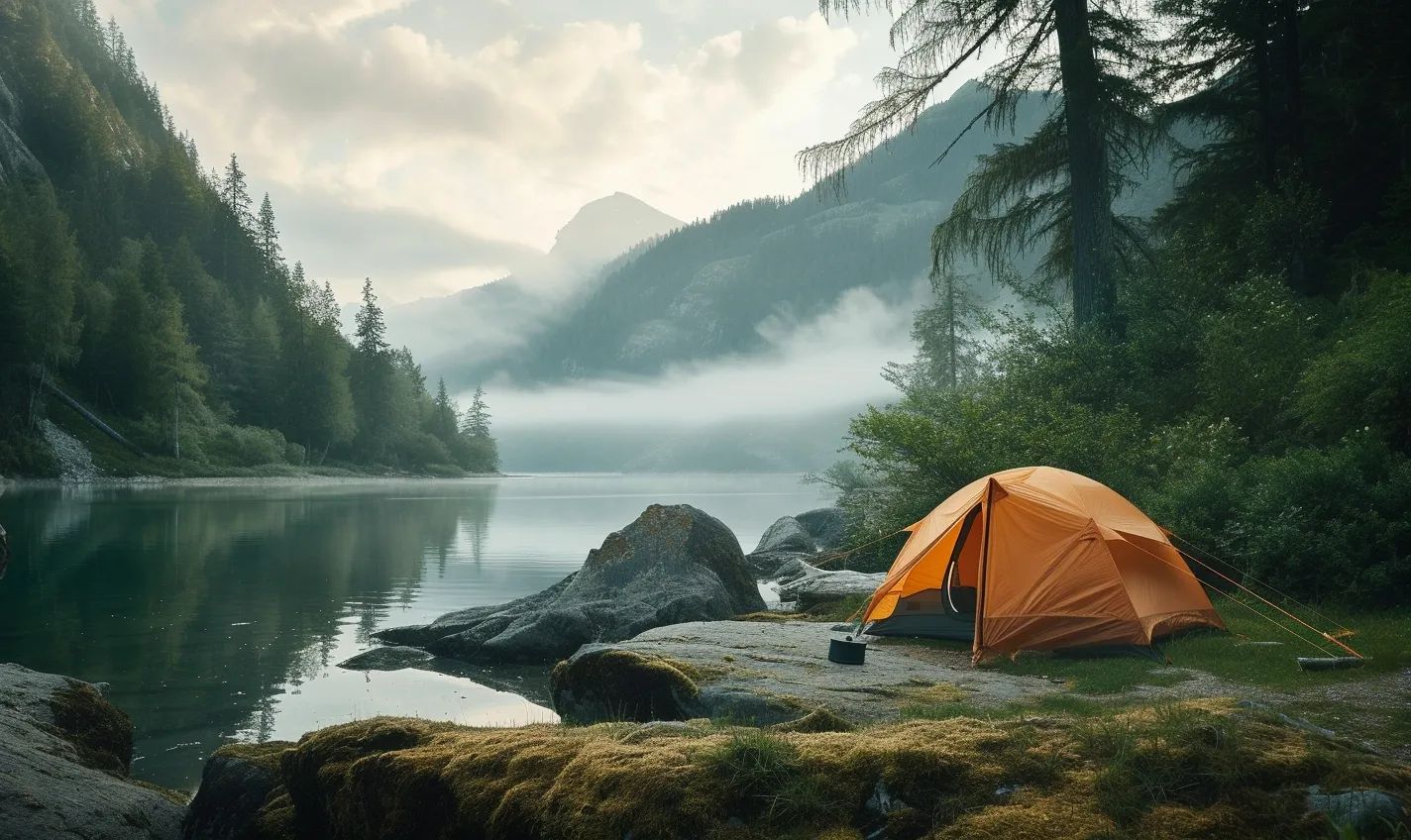
Tips for Finding a Campsite Compatible with Animal Habitats
When planning a camping trip, it is essential to consider the impact our presence can have on the surrounding wildlife. We can minimize our impact and promote a harmonious coexistence by choosing a campsite compatible with animal habitats. Here are some tips to help you select a campsite that respects and preserves the wildlife around you:
Research the Area
Before embarking on your camping adventure, take the time to research the area you plan to visit. Look for information about local wildlife, including their habitats and any known species of concern. Knowing what animals are present will help you make informed decisions when selecting a campsite.
Observe Animal Trails and Signs
While exploring the area, watch for animal trails, tracks, and signs like scratches on trees or scat. These indicators can give you insights into the movement and habits of wildlife in the area. Avoid setting up camp directly on these trails to minimize disturbance to their habitats.
Choose Established Campsites
Opt for established campsites whenever possible. These designated areas have typically been selected to minimize the impact on wildlife and their habitats. Look for campgrounds that have facilities such as fire rings, picnic tables, and designated tent areas. By using existing sites, you can reduce the need to clear new areas, which could disrupt animal habitats.
Stay Away from Water Sources
Water sources, such as rivers, lakes, or ponds, are crucial for the survival of wildlife. Try to stay at least 200 feet away from these areas when choosing a campsite. This distance helps to prevent pollution or intrusion into the animals’ natural drinking or hunting grounds.
Respect Quiet Zones
Some camping areas may have designated “quiet zones” or places with minimal noise to protect wildlife. Be mindful of these zones and choose a campsite away from them if you prefer a more lively camping experience. Respecting these quiet zones allows animals to thrive without unnecessary disturbances. Following these tips ensures your camping experience is enjoyable and respectful of the surrounding wildlife. Let’s choose our campsites wisely and create a positive impact on animal habitats.
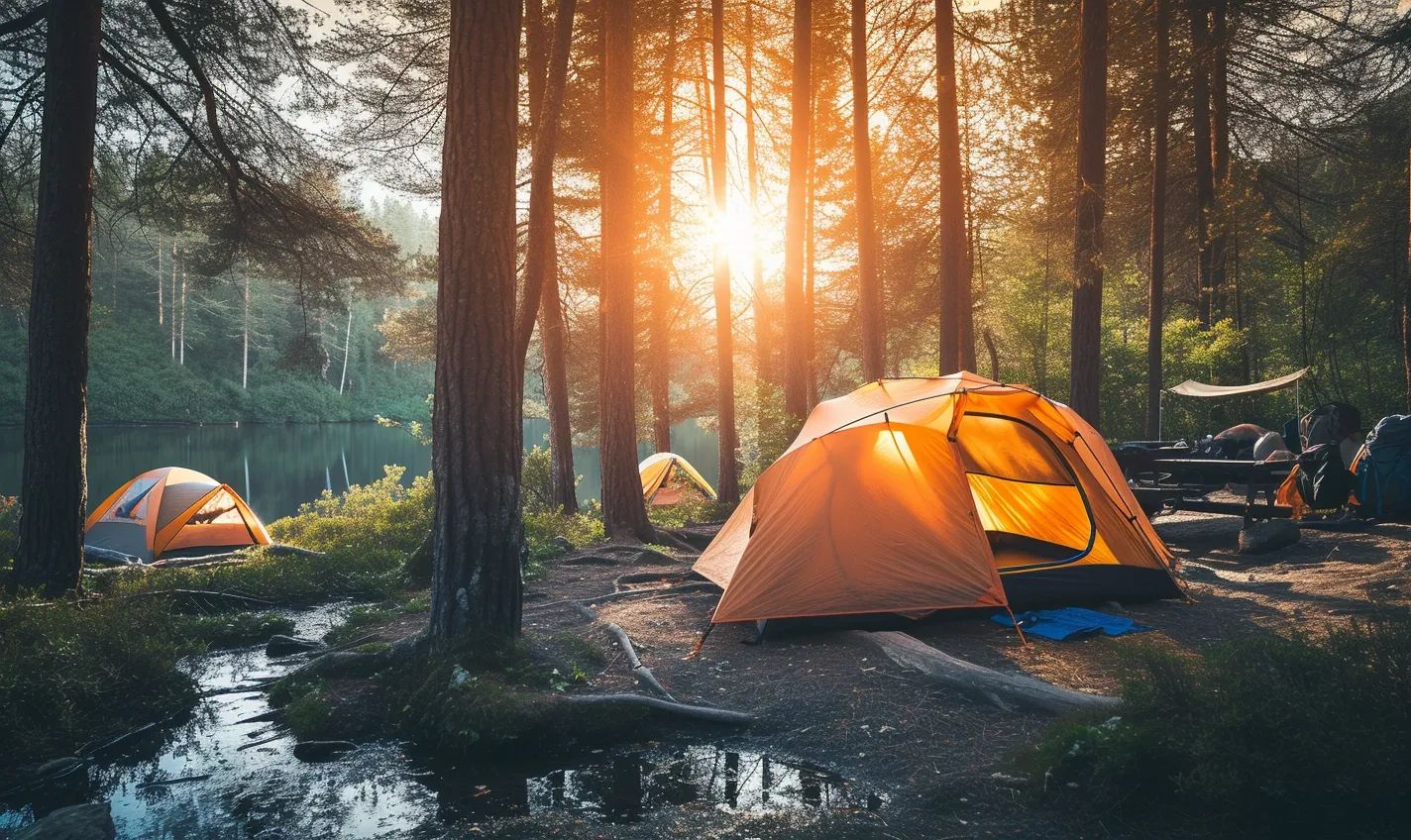
Minimizing Your Impact on Wildlife: Choosing the Right Campsite
Regarding camping, one of the most important considerations is choosing a suitable campsite. Not only do you want to ensure your safety and comfort, but you also want to minimize your impact on the surrounding wildlife and their habitats. By selecting a campsite compatible with animal habitats, you can help protect the natural environment while still enjoying your outdoor experience.
Consider Wildlife When Selecting Your Campsite
Before setting up camp, take a moment to think about the animals that inhabit the area. Consider the following factors:
- Is there a potential food source nearby that may attract wildlife?
- Are there any nesting or breeding areas that you should avoid?
- Is the campsite located on a migration route?
By being aware of these factors, you can choose a campsite that has minimal impact on wildlife populations and their natural behaviors.
Understanding Animal Habitats – A Guide for Campers
Educating yourself about the different habitats where you plan to camp is essential. Some animals prefer forests, while others thrive in grasslands or near bodies of water. By understanding the specific habitat needs of local wildlife, you can better select a campsite that minimizes disruption to their natural homes.
Tips for Finding a Campsite Compatible with Animal Habitats
Here are some practical tips to help you find a campsite that is compatible with animal habitats:
- Look for designated campsites that have been established to minimize impact on wildlife.
- Choose a site that is located away from animal trails and sensitive areas.
- Avoid camping near water sources, as this may disrupt animals’ access to drinking water.
- Keep noise and light pollution to a minimum to avoid disturbing wildlife.
By following these tips, you can ensure that your campsite selection supports the well-being of local wildlife while still providing you with a memorable outdoor experience. Remember, as campers, it is our responsibility to respect and protect the natural environment. By choosing a campsite that is compatible with animal habitats, we can enjoy the beauty of wildlife while minimizing our impact on their home. So, the next time you plan a camping trip, take the time to choose a campsite thoughtfully and remember to leave no trace behind.
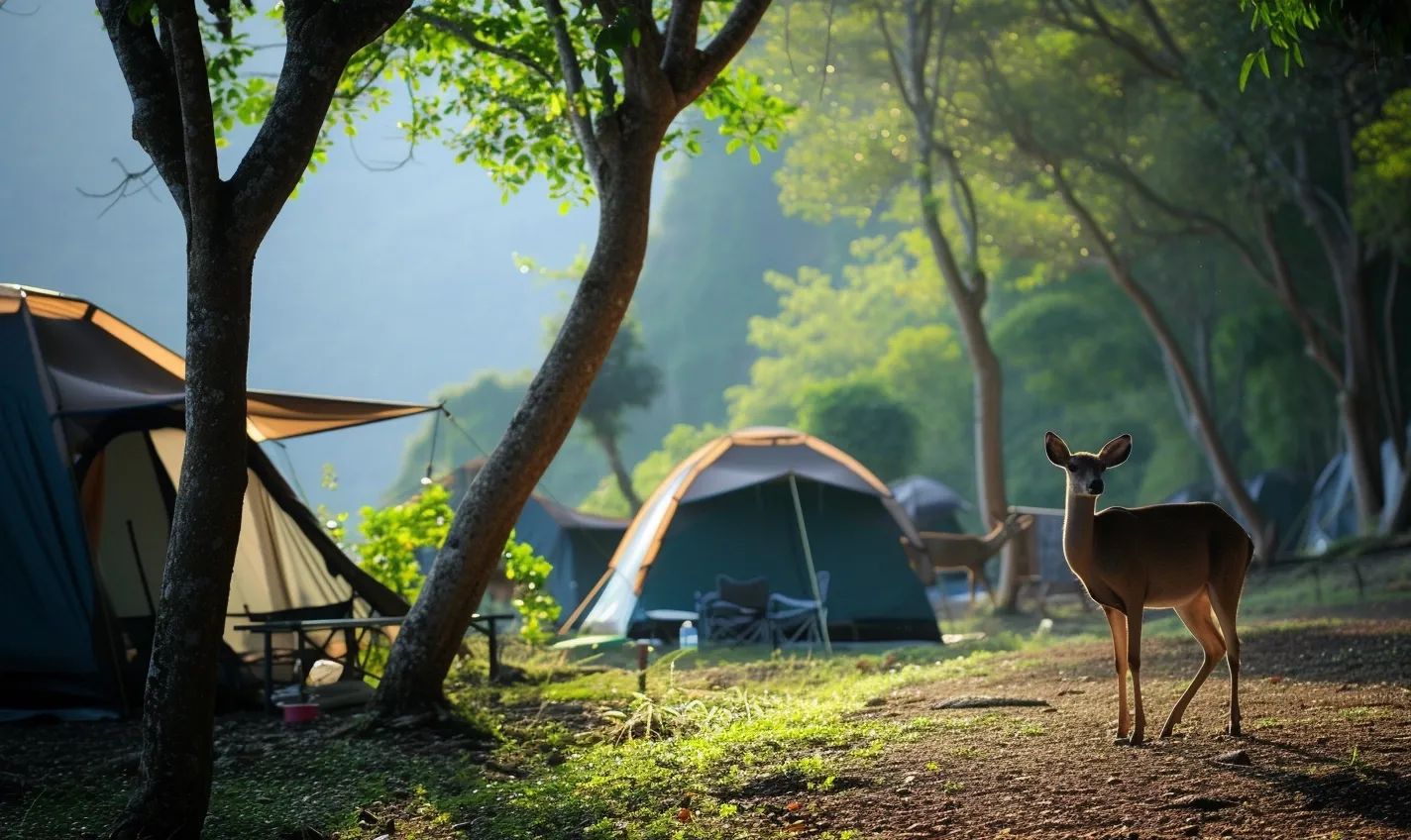
Campsite Selection: Balancing Comfort and Preservation of Animal Habitats
When embarking on a wildlife camping adventure, choosing a suitable campsite is crucial for your comfort and the preservation of animal habitats. While selecting a site solely based on convenient amenities or picturesque views may be tempting, it is essential to consider your presence’s impact on the surrounding wildlife.
Respecting Wildlife and the Environment
Understanding animal habitats and their diverse ecosystems is the foundation for responsible camping. By following a few simple guidelines, you can minimize your impact on the delicate balance between wildlife and their surroundings:
- Stay on designated trails and campsites to avoid disrupting animal habitats.
- Please do not feed or approach wildlife; this can alter their natural behavior and endanger you and the animals.
- Keep noise levels to a minimum to avoid disturbing local wildlife.
- Pack out all trash and dispose of waste properly to prevent pollution and attract unwanted wildlife.
- Respect vegetation and avoid damaging plants and trees that provide animal shelter and food.
Choosing the Right Campsite
When selecting a campground, consider the following factors to ensure a wildlife-friendly experience:
- Location: Research the area for known animal habitats and choose a campsite outside sensitive areas.
- Distance from Water Sources: Setting up camp at least 200 feet away from lakes, rivers, or streams is crucial for minimizing your impact on wildlife that depend on these water sources.
- Noise Level: Look for campsites away from busy roads or recreational areas to allow wildlife to roam undisturbed.
- Shade and Vegetation: Campsites with ample shade and vegetation can offer natural barriers and make your stay more comfortable while preserving animal habitats.
- Level Ground: A level campsite provides convenience and prevents erosion and damage to the surrounding environment.
Remember, selecting a campsite that balances your comfort with the preservation of animal habitats allows for a more authentic and immersive camping experience. By respecting wildlife and the environment, you can coexist with nature while enjoying all its wonders. 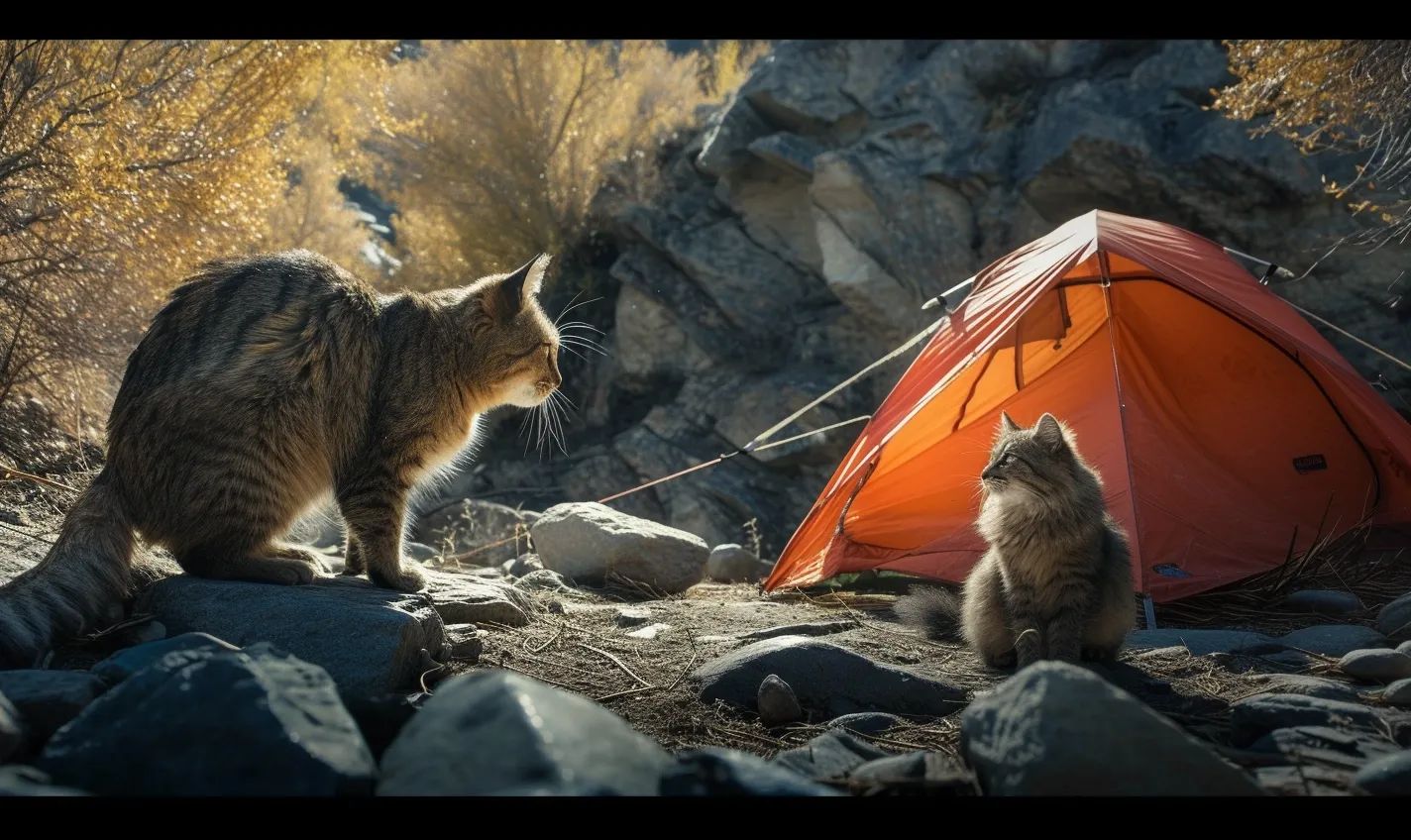
Exploring the Diversity of Wildlife-Friendly Campsite Options
Choosing a suitable campsite is about comfort and convenience and respecting and preserving the natural environment, especially local wildlife habitats. When camping, we must be mindful of our impact on wildlife. By selecting a wildlife-friendly campsite, we can coexist peacefully with the animals, enhancing our camping experience and fostering a sense of appreciation for the diverse wildlife that shares the land with us.
Why is it important to choose a wildlife-friendly campsite?
When we select a campsite that aligns with animal habitats, we can:
- Minimize disturbance to wildlife by avoiding their nesting or feeding areas.
- Reduce the risk of encounters with potentially dangerous animals.
- Witness wildlife behaviors and appreciate the beauty of nature up close.
- Promote ethical camping practices and inspire others to do the same.
Factors to consider when choosing a wildlife-friendly campsite:
- Research animal habitats: Before heading out, learn about the region’s wildlife and specific habitat requirements. This knowledge will help you identify suitable campsites away from sensitive areas.
- Stay on designated sites: Camping in authorized areas allows wildlife to follow their regular patterns undisturbed.
- Choose established sites: Camping with existing fire pits, cooking areas, and tent sites reduces your impact on the local ecosystem, minimizing the need for further clearing or disturbance.
- Consider distance from water sources: Setting up camp too close to rivers, lakes, or ponds can disrupt fragile aquatic ecosystems and disturb wildlife that relies on these areas for drinking and hunting.
- Be mindful of noise: Loud noises can stress wildlife and disrupt their feeding or mating behaviors. Select campsites from popular trails or recreational areas to minimize human activity noise.
- Proper waste disposal: Ensure appropriate waste management to avoid attracting wildlife to your campsite. This includes securely storing food and disposing of trash in designated containers.
Thoughtfully selecting a wildlife-friendly campsite allows you to enjoy a tranquil camping experience while respecting the land and its inhabitants. Remember, we are guests in their homes, and it’s our responsibility to minimize our impact and promote a harmonious coexistence with wildlife. 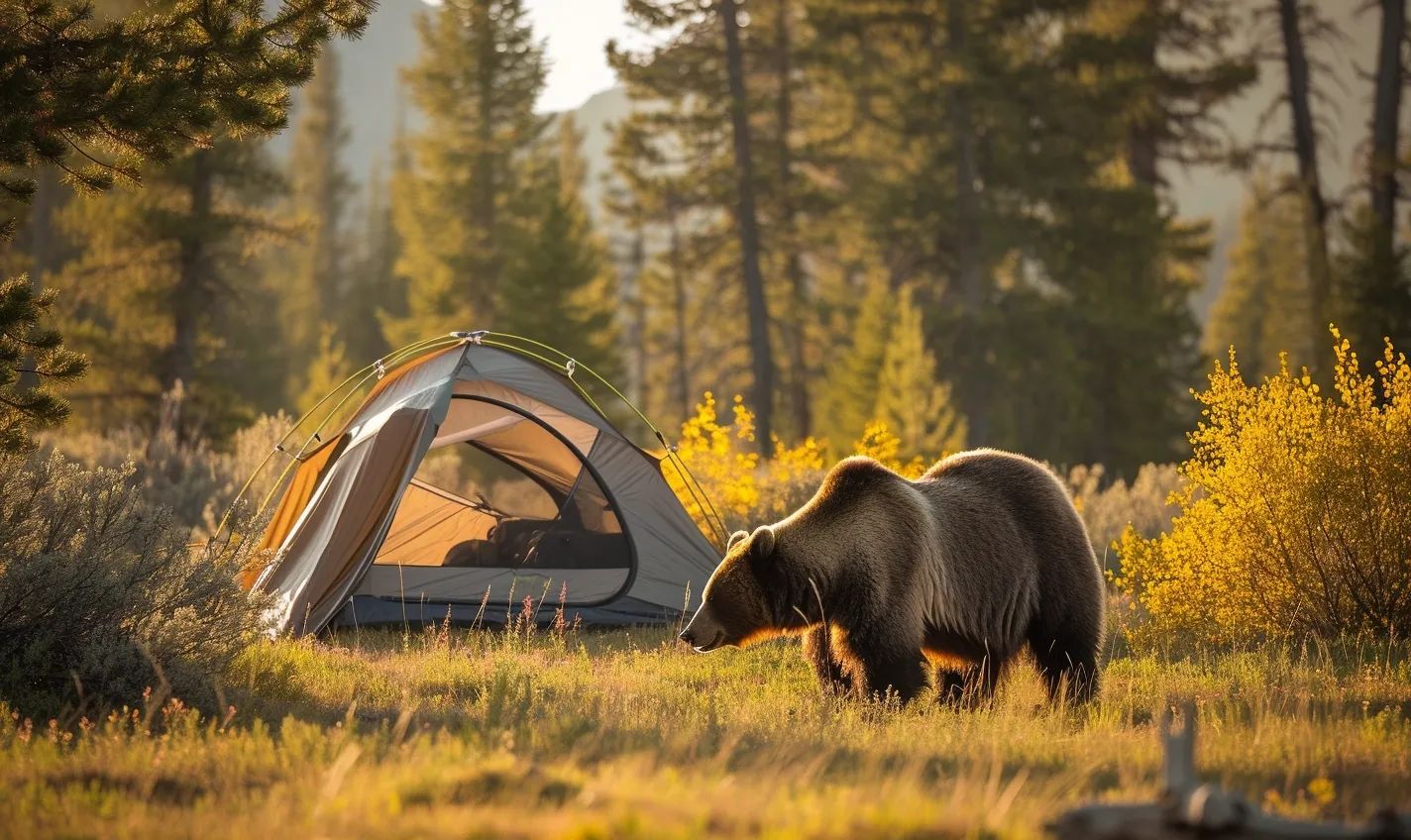
Enhancing Your Camping Experience through Wildlife Coexistence
When it comes to camping, immersing yourself in nature and experiencing the wonders of wildlife can be truly enriching. However, it is essential to coexist harmoniously with the animals that inhabit the areas we choose to pitch our tents. By being mindful of wildlife and their habitats, we can ensure that our camping experience is memorable and respectful of the natural environment.
Why is it important to consider wildlife when selecting your campsite?
Choosing a campsite that is compatible with animal habitats is crucial for your safety and the well-being of the wildlife. By avoiding sensitive areas such as nesting sites or feeding grounds, you can minimize the risk of disturbing or encountering potentially dangerous encounters with animals. It also helps preserve the fragile ecosystems that these creatures depend on for survival.
Understanding animal habitats: A guide for campers
By familiarizing yourself with the local wildlife and their habitats, you can make more informed decisions when selecting a campsite. Consider the following:
- Identify the types of animals that inhabit the area.
- Research their behaviors and patterns.
- Learn about their feeding and nesting habits.
- Understand how they interact with human presence.
Equipped with this knowledge, you can choose a campsite that minimizes disturbances and maximizes your chances of observing wildlife from a safe distance.
Tips for finding a campsite compatible with animal habitats
When searching for the perfect campsite, here are some tips to keep in mind:
- Look for established campsites that are already designated for camping activities.
- Choose higher ground or well-drained areas to avoid disturbing animals in low-lying habitat zones.
- Opt for campsites away from water sources, as these areas are often critical for wildlife survival.
- Consider the availability of natural barriers, such as dense vegetation, to buffer your campsite and animal habitats.
- Ensure you have a safe distance from animal trails or known watering holes.
By following these simple steps, you can significantly minimize your impact on wildlife while enjoying a camping experience that is both responsible and enjoyable. Remember, being an accountable camper means coexisting with wildlife and respecting their habitats. By choosing a campsite compatible with animal habitats, you enhance your camping experience and contribute to the conservation of these incredible creatures.
Creating Positive Encounters: How to Safely Camp in Animal Habitats
When embarking on a camping adventure, immersing ourselves in the remarkable beauty of wildlife is often a key goal. However, it’s crucial to remember that we are merely guests in their natural habitats. Learning how to camp in animal habitats safely is essential to ensure a harmonious coexistence. By following these guidelines, you can create positive encounters and enjoy the wonders of wildlife while minimizing our impact on their fragile ecosystems.
Research the Wildlife in the Area
Before selecting a campsite, take the time to educate yourself on the local wildlife. Understand their behaviors, feeding patterns, and any potential encounters you may have with them. This knowledge will help you choose a campsite that complements their natural habitat and avoids unnecessary conflict.
Choose a Campsite Away from Animal Trails
Avoid areas where animal trails or tracks are visible when selecting your campsite. By camping away from these paths, you minimize the risk of disturbing their natural movements and reduce the likelihood of any surprising encounters.
Store Food Properly
One of the most effective ways to prevent wildlife encounters is by storing your food securely. Utilize bear-resistant containers or hang food at least 10 feet off the ground and 4 feet away from the tree trunk. This ensures that the scent of food won’t entice animals and reduces the chances of unwanted visitors exploring your campsite.
Respect Quiet Hours
Animals are often more active during dawn and dusk. To ensure their tranquility and prevent disruptions, respect quiet hours during these times. Keep noise to a minimum, allowing wildlife to roam their habitats freely.
Minimize Artificial Light
When camping in animal habitats, it’s essential to minimize using artificial lights during the night. Bright lights can disorientate nocturnal creatures and interfere with their natural behaviors. Instead, opt for low-level lighting or utilize red light, which has been shown to have less impact on wildlife. By following these tips, you can help protect the incredible wildlife that inhabits our camping destinations. Remember, the goal is to observe and appreciate their presence while maintaining a safe and balanced coexistence.
Let’s make our camping experiences memorable and respectful to the magnificent creatures that share their home with us. Together, we can preserve these animal habitats for generations to come.
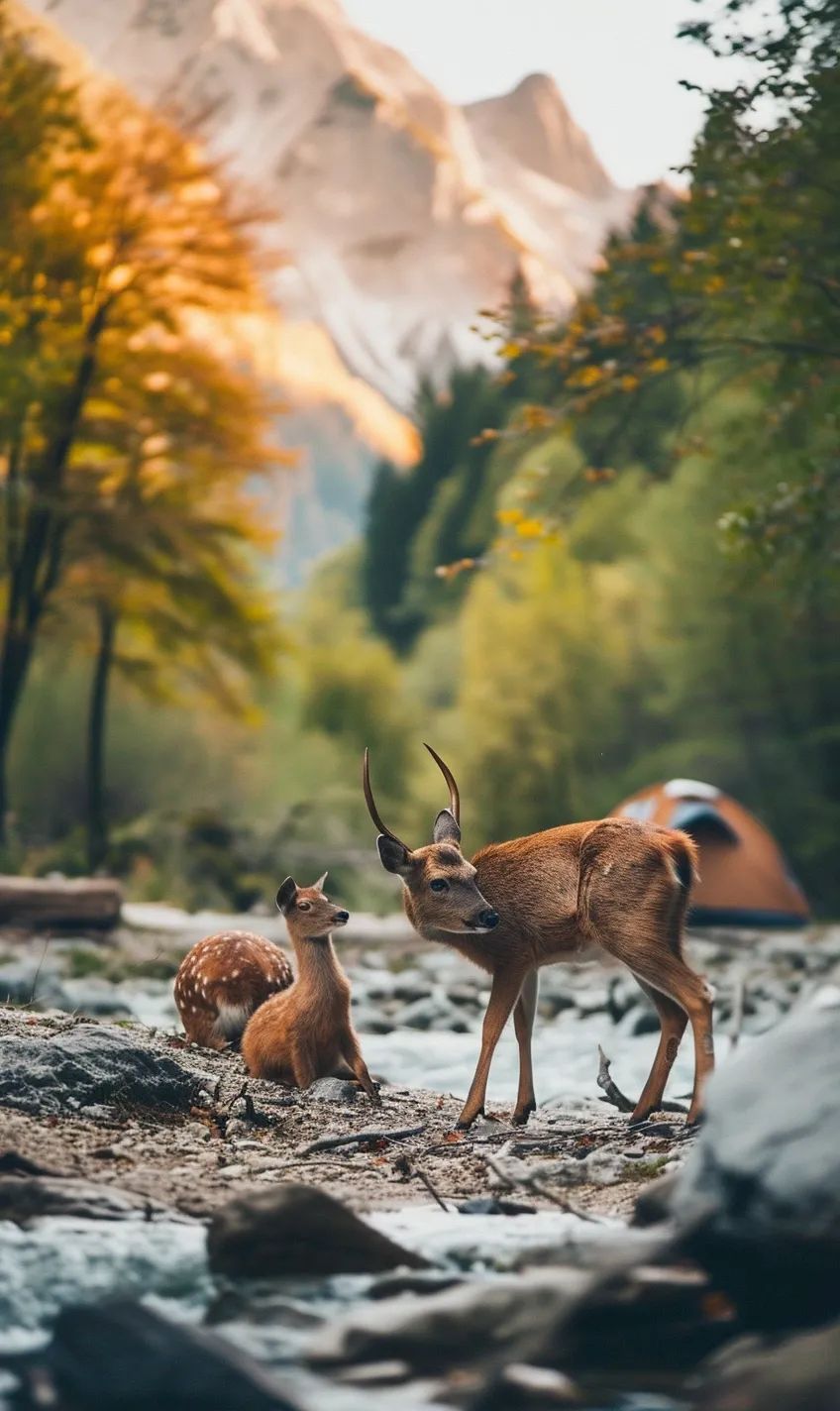
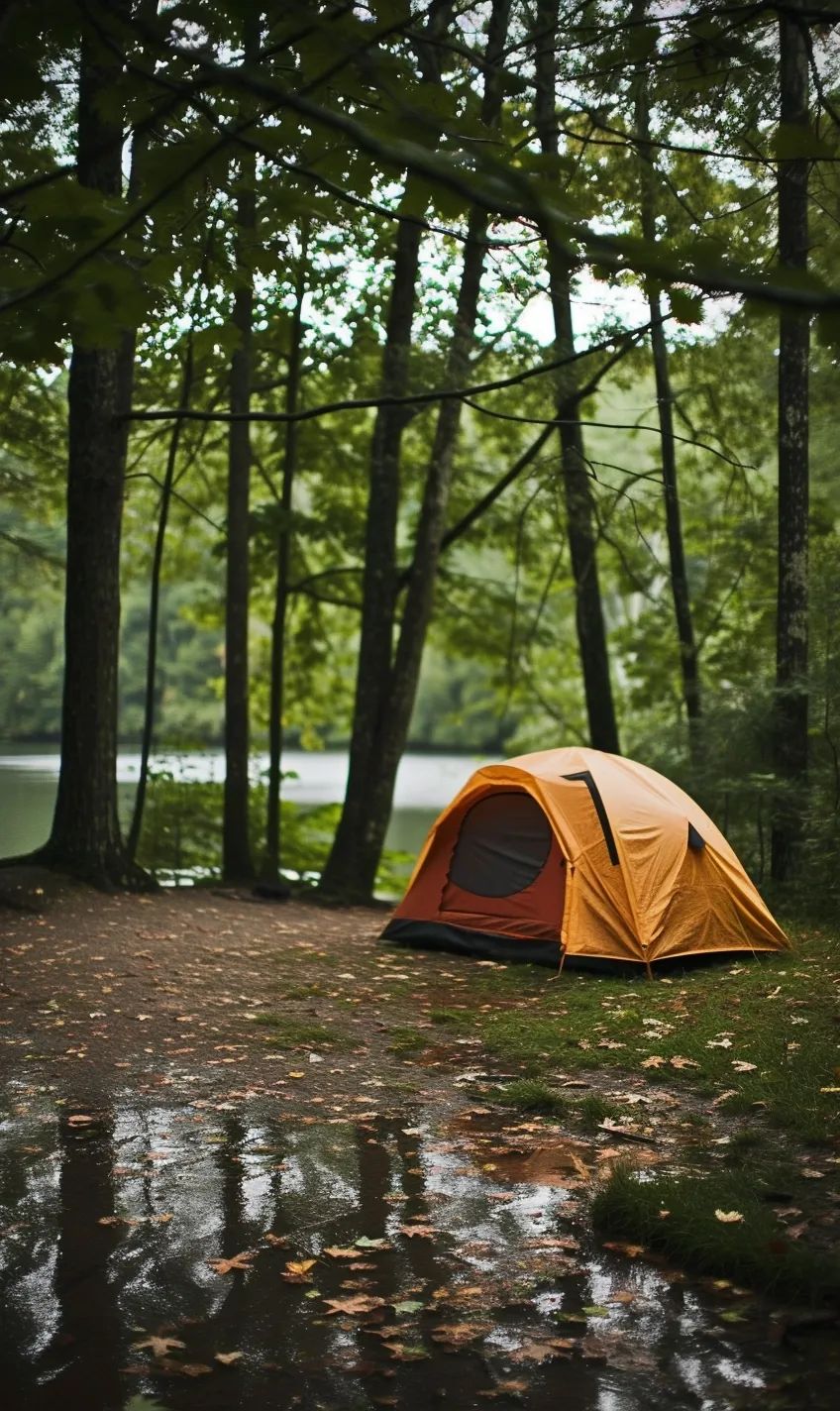
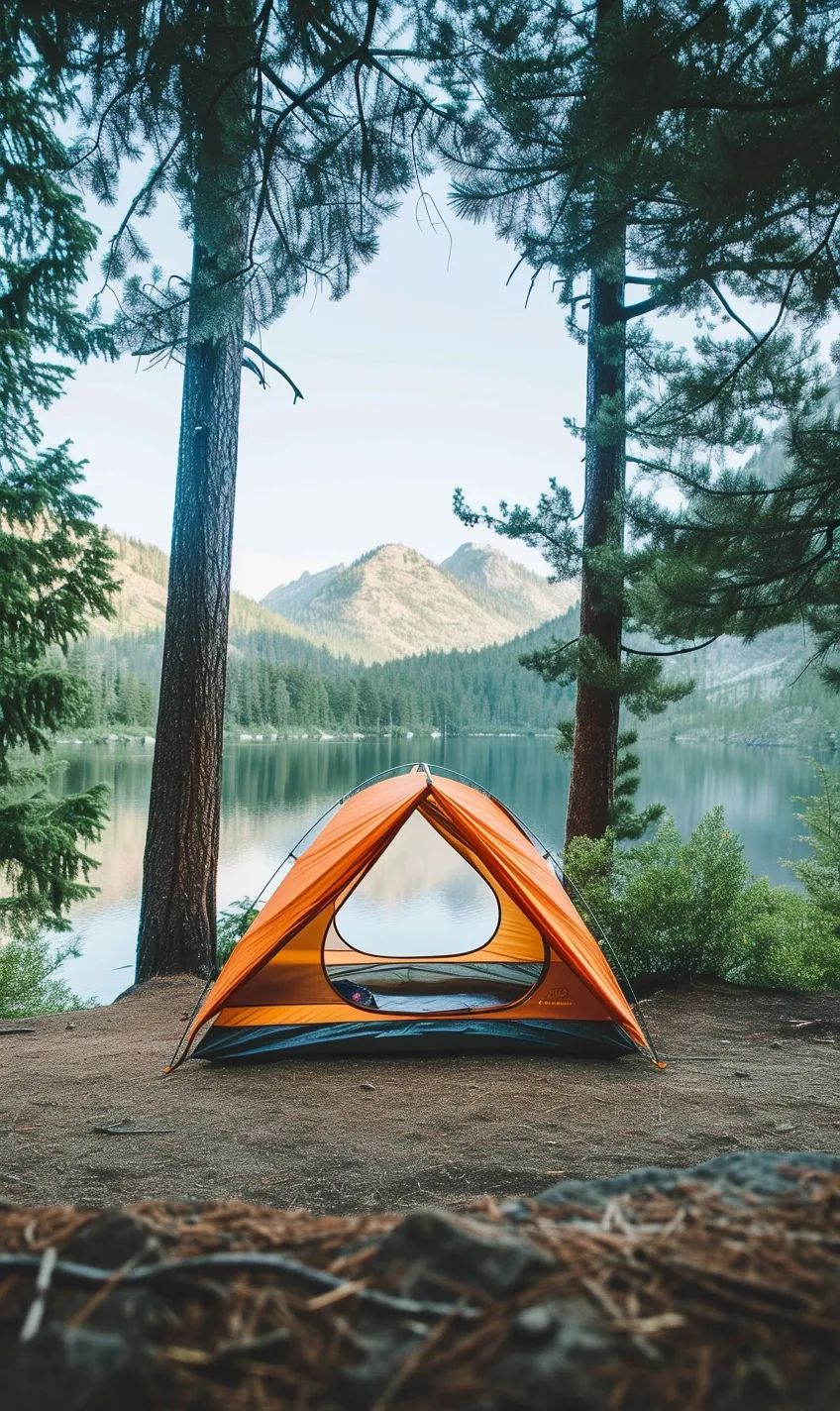
Responsible Camper’s Guide to Safeguarding Wildlife during Your Trip
When venturing into the great outdoors and setting up camp, it is crucial to be mindful of the wildlife that calls these areas home. As responsible campers, we must preserve and protect the delicate balance of animal habitats. By considering wildlife when selecting our campsites, we can play a vital role in safeguarding their well-being. Here are some essential tips to keep in mind:
Choose a Suitable Campsite
Pick a campsite away from known animal habitats, such as nesting grounds or feeding areas. Look for signs of animal activity, tracks, and droppings. Avoid places where animals might seek food, water, or shelter.
Set Up Camp Properly
When setting up your campsite, avoid intruding on animal habitats. Avoid clearing vegetation unnecessarily; remember to pitch your tent on durable surfaces like rocks or bare ground. Do not disturb natural features, and avoid breaking branches or collecting wildflowers.
Keep a Clean Campsite
Proper food storage is crucial to prevent attracting wildlife to your campsite. Store food securely in bear-resistant containers or hang it from a tree branch away from your sleeping area. Dispose of trash in designated containers or take it when you leave. Leave no trace of your presence.
Respect Wildlife
While spotting wildlife during your camping trip is exciting, it is essential to observe from a distance. Do not approach, chase, or attempt to feed any animals you encounter. Please keep your pets on a leash and never allow them to harass or disturb wildlife.
Minimize Noise and Lights
Keep noise levels low within your campsite to avoid disturbing wildlife. Animals may become stressed or alter their behavior if exposed to loud noises. Similarly, minimize artificial lighting during the night as it can disorient animals and disrupt their natural patterns. By following these guidelines, you can enjoy your camping experience while ensuring the wildlife’s well-being. As responsible campers, we have the power to make a positive impact on our natural surroundings. Let’s preserve and protect wildlife habitats for generations to come!
Conclusion
In conclusion, when choosing a campsite for your next outdoor adventure, it is essential to consider the wildlife and animal habitats in the area. By selecting a campsite away from known animal habitats, you can help minimize disturbances to the local wildlife and ensure a safer camping experience for you and the animals. Remember to research and educate yourself about the local animal species and their behaviors.
This knowledge will allow you to make informed decisions about where to set up your camp and take necessary precautions to avoid encounters with potentially dangerous animals. By respecting the natural environment and being mindful of our impact on wildlife, we can all contribute to preserving animal habitats and continue enjoying the beauty of nature during our camping trips.
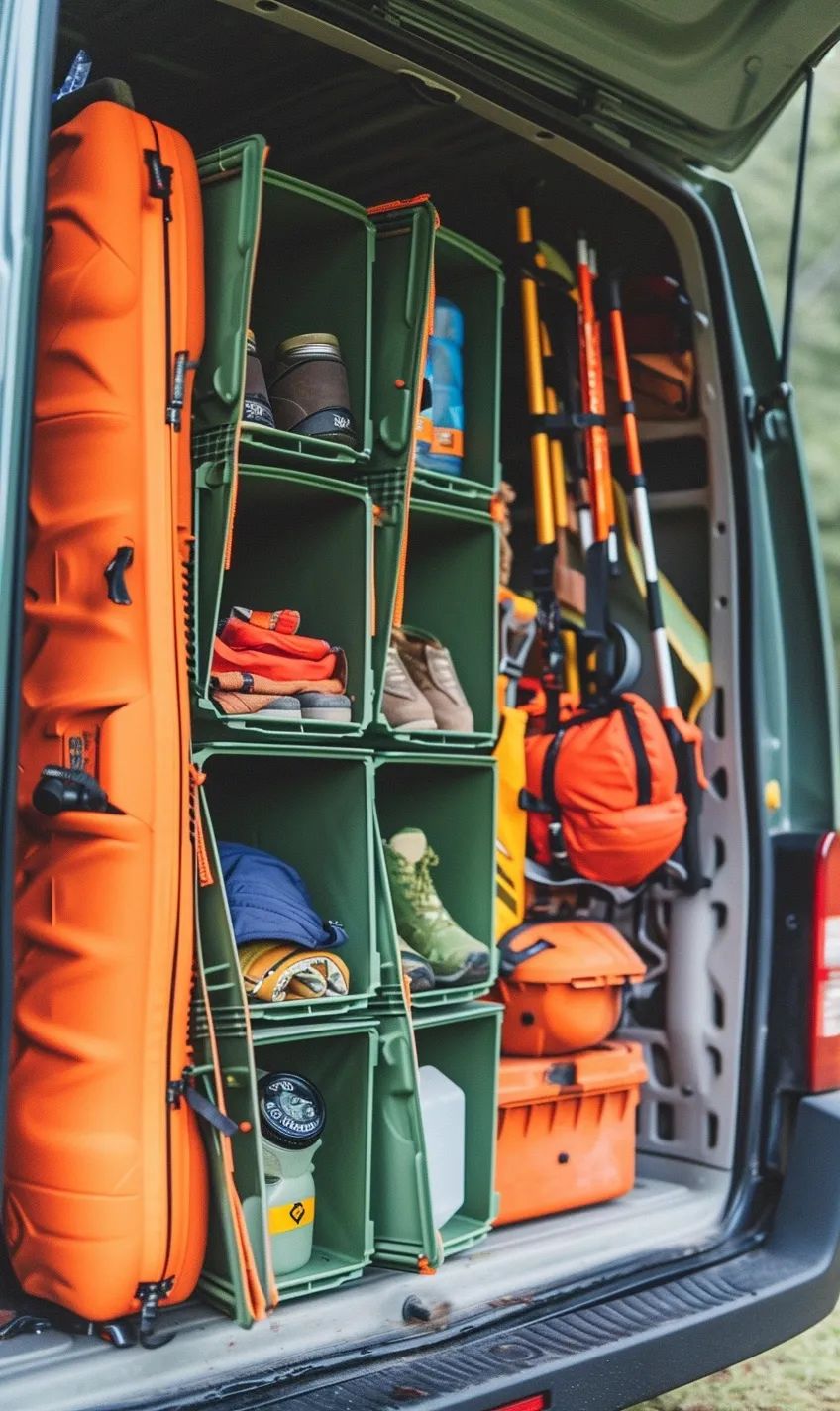
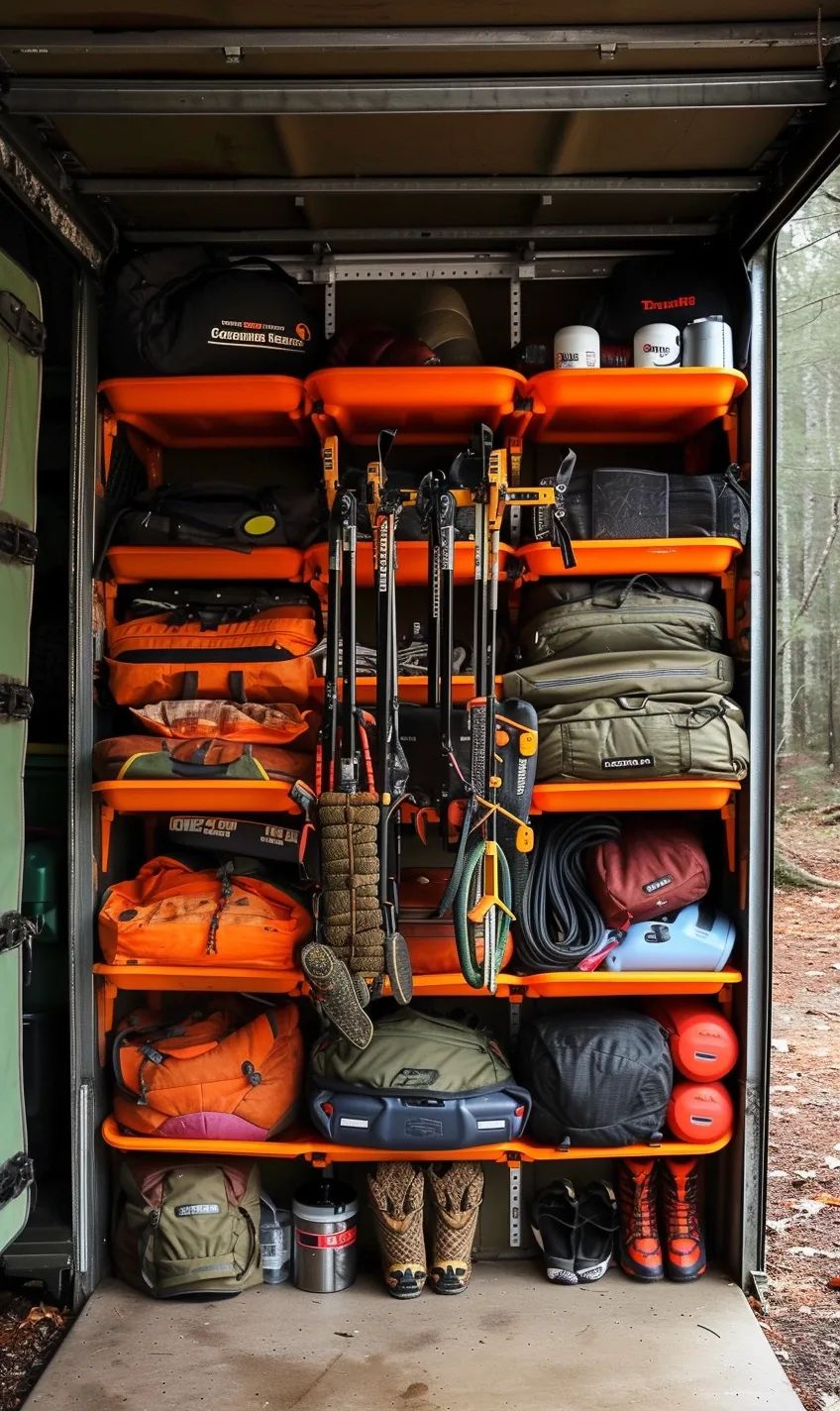







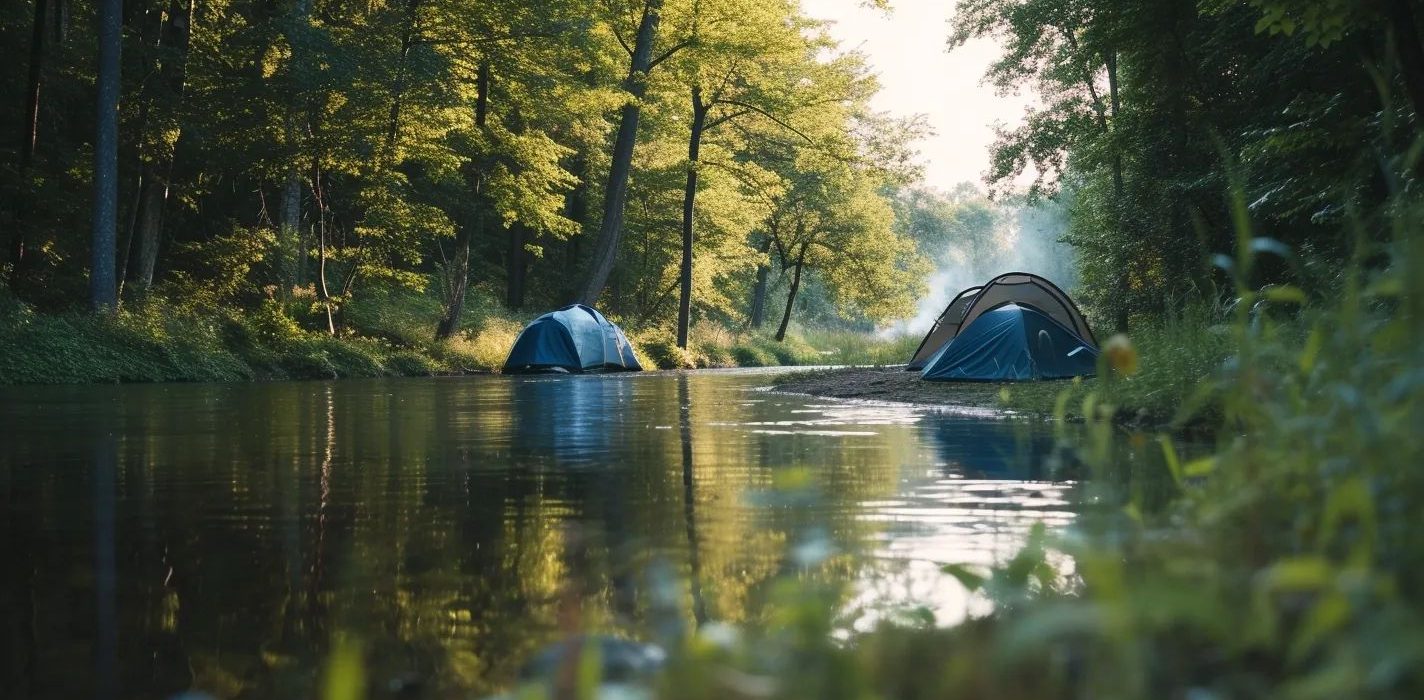


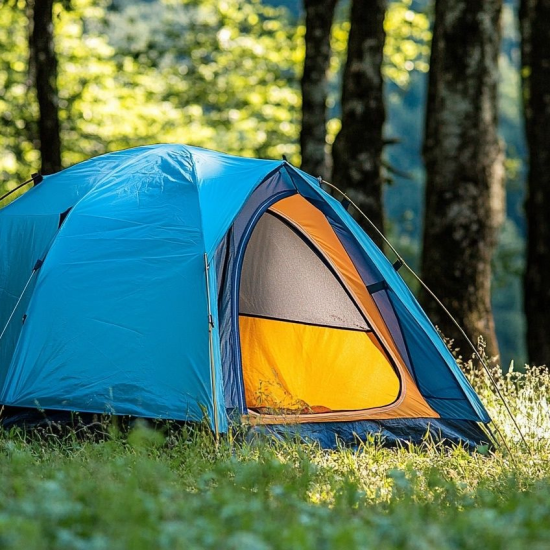
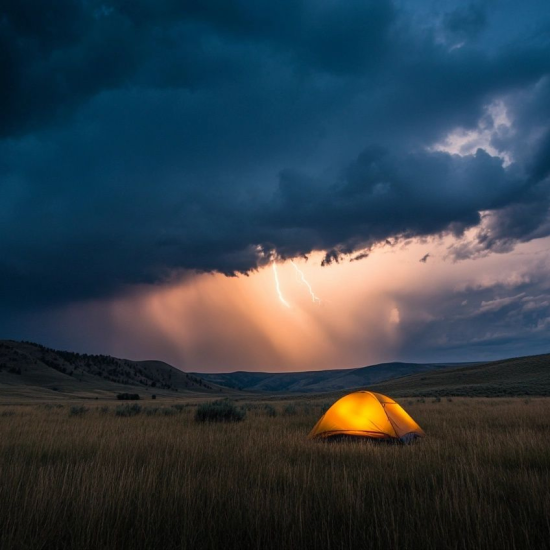
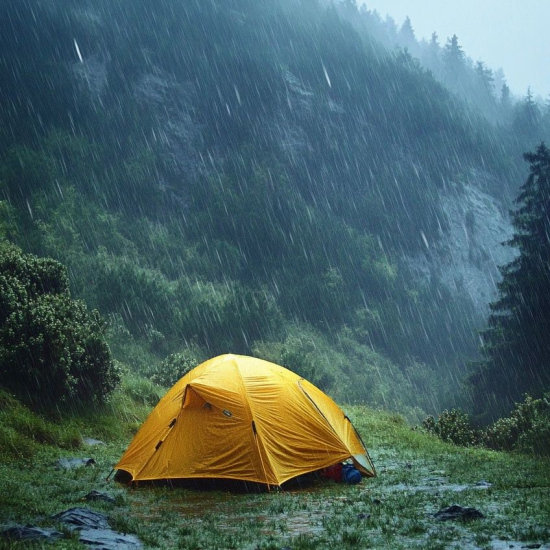
No Comment! Be the first one.